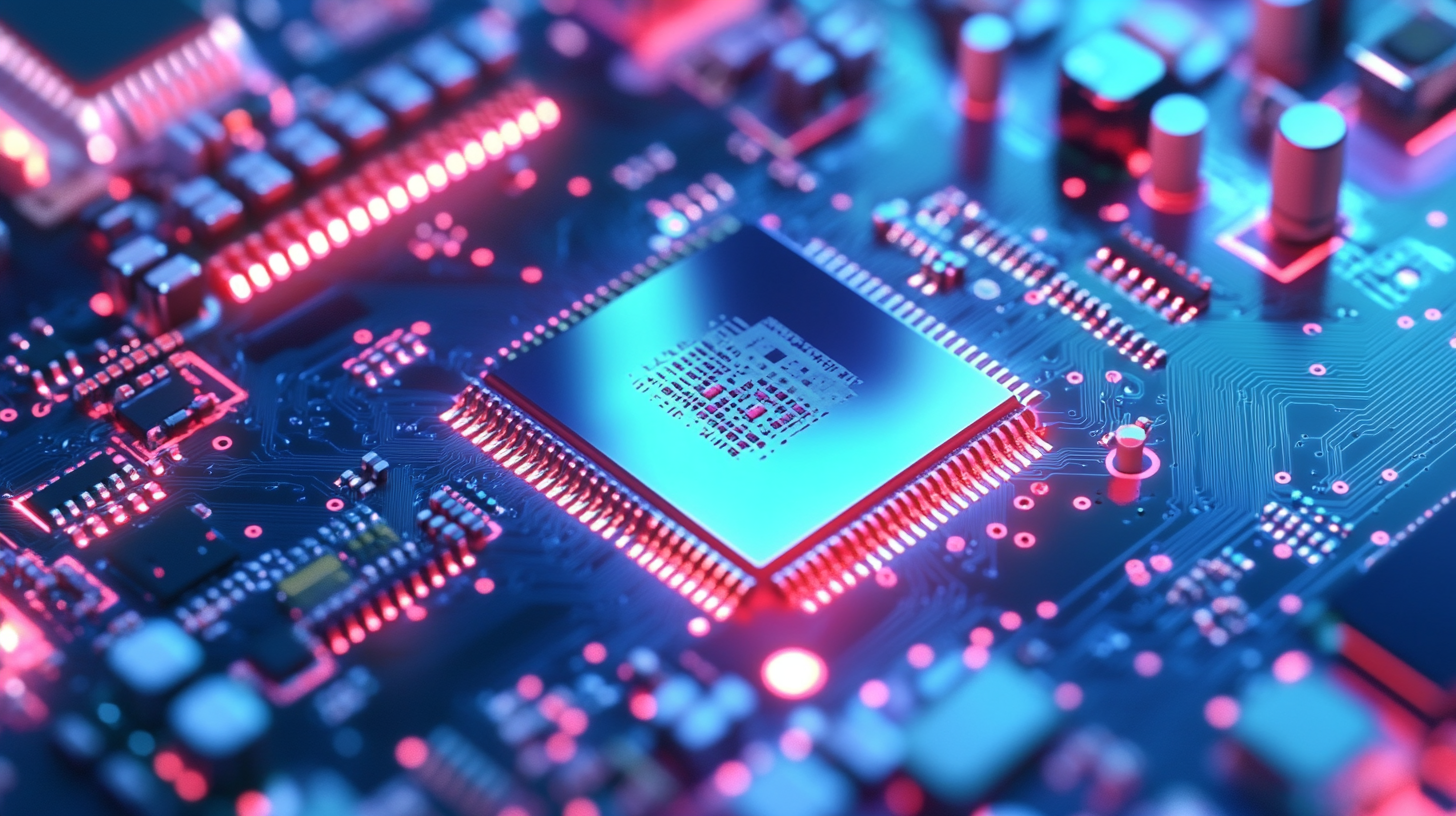

In 2024, the landscape of global supply chains is being significantly influenced by advancements in Printed Circuit Board (PCB) technology. As industries increasingly rely on PCBs to enhance functionality and connectivity within electronic devices, their role in supply chain optimization cannot be overstated. According to a recent report by Research and Markets, the global PCB market is projected to reach $85 billion by 2027, reflecting a compound annual growth rate (CAGR) of 4.5%. This growth is driven by the rising demand for electronic products and the need for efficient after-sales services and cost-effective repair solutions. Companies are leveraging innovative PCB designs to not only improve product reliability but also to reduce maintenance costs and enhance customer satisfaction. In this blog, we will explore the top five PCB examples that are redefining supply chains and setting new benchmarks for operational excellence in 2024.

In 2024, innovative printed circuit board (PCB) designs are set to revolutionize global trade logistics by enhancing efficiency and reducing costs. According to a recent industry report by MarketsandMarkets, the global PCB market is projected to reach $92.9 billion by 2027, growing at a CAGR of 6.3%. This surge is primarily driven by advancements in technology and an increasing demand for miniaturized electronics across various sectors, especially in supply chain management.
One key innovation in PCB design is the integration of advanced sensors and IoT capabilities, enabling real-time tracking of goods throughout the supply chain. A study by Gartner indicates that companies leveraging IoT devices can improve their supply chain efficiency by up to 30%. Additionally, sophisticated PCB designs facilitate better connectivity and data sharing, allowing for predictive analytics that can foresee potential disruptions. Such capabilities not only streamline operations but also enhance decision-making processes, leading to more resilient and responsive supply chains.
Furthermore, eco-friendly PCBs made from sustainable materials are gaining traction in the market, as companies increasingly prioritize environmental responsibility. A report from Research and Markets highlights that the green PCB segment is expected to grow at a rate of 8.5% annually through 2026, driven by regulatory pressures and consumer demand for sustainable practices. By adopting these innovative designs, businesses can optimize their logistics operations while contributing to a greener planet, demonstrating how modern PCB technology is pivotal in transforming trade logistics on a global scale.

The landscape of printed circuit boards (PCBs) is evolving towards sustainability, guided by innovations that promote eco-friendly manufacturing practices. Recent studies indicate that sustainable additive manufacturing technologies for PCBs could reduce manufacturing costs, energy consumption, and CO2 emissions by an impressive US$170–593 billion. This potential makes it clear that the push for sustainable PCBs is not just a trend but a significant movement transforming global supply chains.

In parallel, the exploration of biodegradable substrates for both rigid and flexible circuit boards presents a promising avenue for achieving greener electronics. The growing focus on cellulose-based materials highlights their viability in environmental protection, reinforcing their role in sustainable PCB production.
As the electronics and semiconductor industries look ahead to 2025-2035, research emphasizes the necessity of sustainable practices, focusing on reducing environmental impact during PCB manufacturing processes. Innovations in recyclable PCBs, along with the increasing adoption of sustainable materials, are paving the way for a more responsible and efficient future in electronics manufacturing.
As we enter 2024, the landscape of printed circuit board (PCB) manufacturing is undergoing a significant transformation driven by emerging technologies that are reshaping global supply chains. According to a recent report by **Mordor Intelligence**, the global PCB market is anticipated to reach **$72 billion by 2026**, with a compound annual growth rate (CAGR) of **3.2%**. This growth is fueled by advancements such as automation, AI-driven design, and sustainable manufacturing practices, which are fostering more efficient production techniques and enhancing supply chain agility.
Automation technologies, including robotics and real-time monitoring systems, are revolutionizing PCB manufacturing by significantly reducing production time and minimizing human error. **Research by Deloitte** indicates that companies integrating automation into their manufacturing processes can improve productivity by up to **30%**. Furthermore, the adoption of AI in PCB design is enabling manufacturers to optimize layouts, reduce material waste, and accelerate time-to-market. As companies face increasing demands for customization and complexity, these innovations not only streamline processes but also better align supply chain dynamics with market needs, ultimately leading to a more responsive and resilient manufacturing ecosystem.
Quality assurance in printed circuit board (PCB) production has become a cornerstone for building trust in global markets. As the demand for electronics continues to surge, manufacturers are increasingly recognizing that maintaining rigorous quality standards is essential not only for ensuring product reliability but also for fostering long-term relationships with clients and partners. Implementing comprehensive quality control measures throughout the manufacturing process—from raw material selection to final testing—can significantly enhance the integrity of PCBs, reducing defects and improving overall performance.
Moreover, the advancement of technology in quality assurance systems allows companies to leverage data analytics and automation. By adopting real-time monitoring and inspection techniques, manufacturers can proactively identify and address issues before they escalate, ensuring that their PCBs meet stringent international standards. This commitment to quality not only boosts the reputation of manufacturers but also enhances consumer confidence, leading to greater adoption of products in diverse sectors. In a landscape where reliability and performance are paramount, the focus on quality assurance is helping to optimize global supply chains and drive innovation across industries.
In 2024, printed circuit boards (PCBs) have emerged as a pivotal innovation in reshaping global supply chains. Companies are harnessing the power of PCBs to streamline operations and improve product reliability.
A compelling case study is that of a major automotive manufacturer that integrated advanced PCB technology into its production line. This shift not only enhanced the efficiency of their electronic components but also significantly reduced lead times, allowing for quicker responses to market demands. By optimizing their supply chain with intelligent PCB designs, the company is now positioned to adapt rapidly to changes in consumer preferences, ultimately driving business growth.
Another notable example can be found within the logistics sector, where a leading company adopted PCBs embedded with IoT capabilities. This implementation allowed for real-time tracking and monitoring of goods as they moved through the supply chain.
By utilizing data from these smart PCBs, the company achieved unprecedented visibility over its operations, resulting in improved inventory management and reduced operational costs. The success of this strategy underscores how innovative PCB applications are not only improving efficiency but also enhancing customer satisfaction by providing more reliable delivery services.